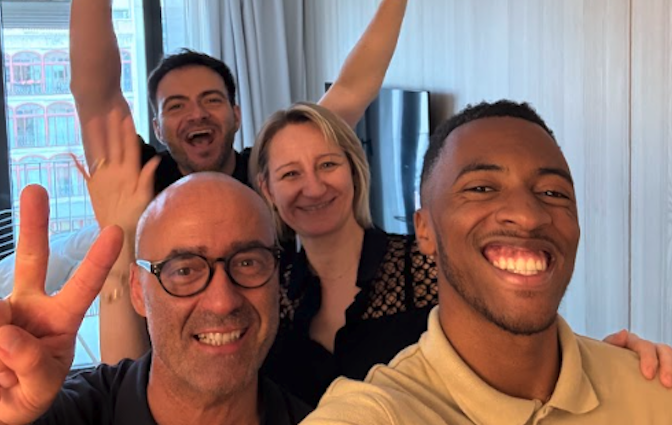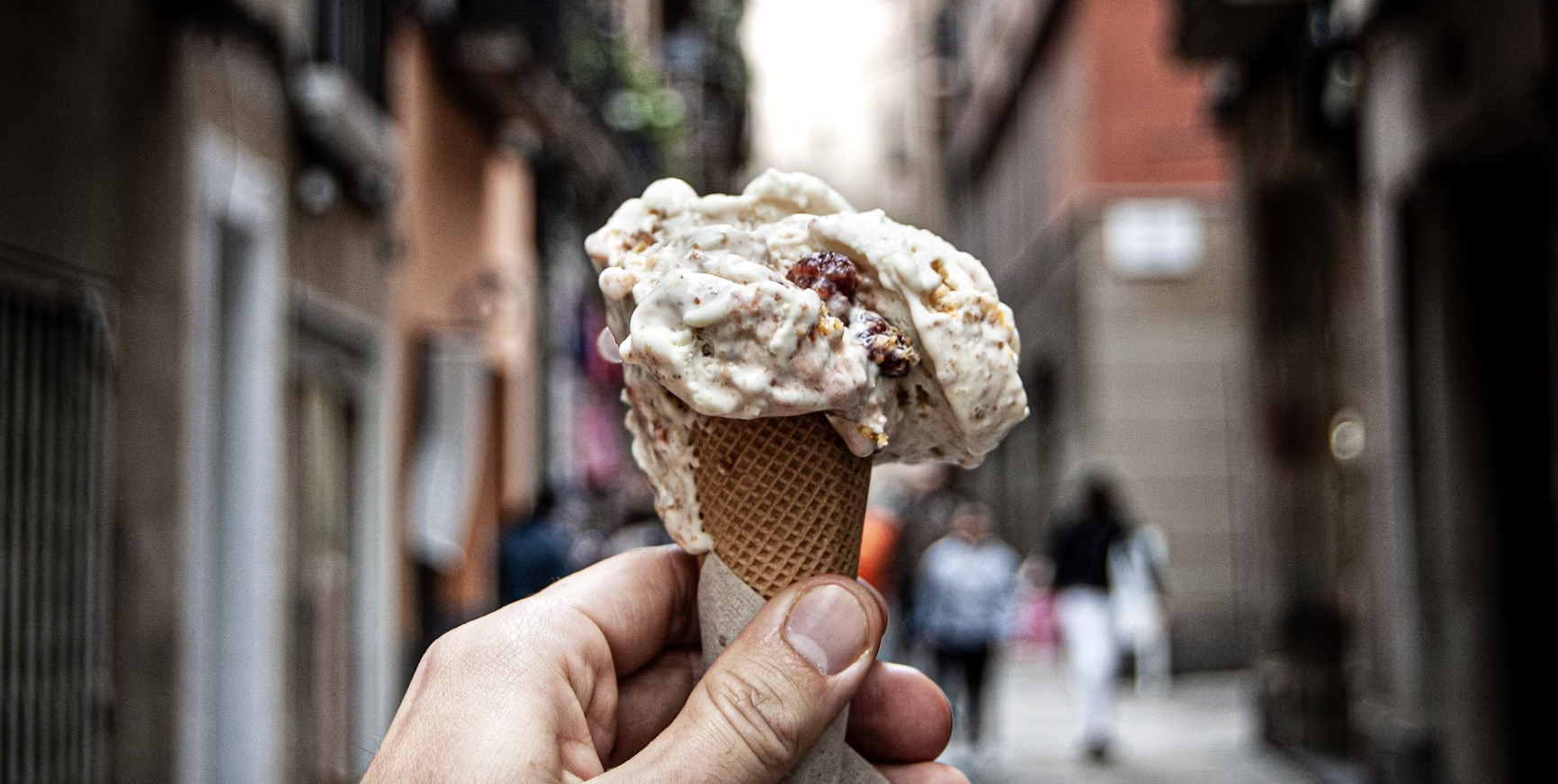Over the next few days, we will be publishing a student’s retelling of her stay with Barcelona SAE. Isabel Elliot is an undergraduate neuroscience major at Boston University and was a participant in our first 10-day January Term program called FOOD FIGHT: Constructing and Communicating Regional Identity in Spain and the EU with communications students from the University of Colorado Denver.
In her own words, here are the first of Isabel’s entries that will bring satisfaction to both travelers and foodies alike.
Day 5 – January 11th
In the morning, we had a presentation on the evolution of Spanish politics from Franco’s death in 1975 up until now. During Franco’s rule, Spain had a military dictatorship. Following his death, they made a rapid and somewhat messy transition to a constitutional monarchy. A constitutional monarchy includes a king or queen (monarch) but also a parliament and prime minister who actually has more power than the monarch as far as policy making is concerned.
That talk was really fascinating as far as understanding how Spain has come to this point in their governmental system and especially how it has influenced their participation in global politics. We didn’t focus very much on how all of their change has influenced food, however, it was interesting to learn how culturally diverse Spain is and how that has potentially influenced food.
Here’s some fun facts that I learned:
- All of Spain has one official language and other languages are official on a regional basis. All Spanish citizens have the “duty” to speak Castellano (what most people refer to simply as Spanish) and the “right” to speak other regional languages such as Catalan and Gallego.
- There are 17 autonomous communities within Spain.
- There is currently 25% unemployment overall and it’s closer to 50% for younger people.
- Current King: Juan Carlos I
- Current Prime Minister: Mariano Rajoy
- Catalunya is currently trying to secede from Spain.
After the talk, we had a tour of the Raval district. The Raval district was a not a good part of town up until the 1992 Olympic Games that were held in Barcelona. Prior to the Olympic Games, it was known as the part of town that held the red light district and a majority of the illicit drug use. As the Olympics approached, the local government wanted to revamp the Raval district and make it more attractive to athletes and the crowds that would be visiting. Although the neighborhood had been redone and cleaned up, locals were still hesitant to move there because of its previous connotations. Because of these factors, the only group that was eager to move into this part of town were immigrants, so today the Raval district is known for being diverse in inhabitants, cuisine, and shops.
During our visit to the Raval district, we took note of the variety of shops around the area, which included more signs in Arabic and shops that sold clothing specific to cultures that are not native to Spain. We also noticed people of different cultures that were expressing their cultures outwardly whether it be via clothing, language or otherwise. We also experienced some of the nightlife to be enjoyed in the Raval district and had a fantastic time bonding as a group.
Day 6 – January 12th
Today was sort of a free day for us to complete our scavenger hunt. Most of it had been completed throughout the week and included sites such as La Sagrada Familia, Parc Güell, and Barceloneta Beach. Today, a group of us went to Parc Güell, which is a park and outdoor space that was designed by Antoni Gaudí for the upper-class citizens of Barcelona. As well as the park that includes characteristic mosaicked Gaudí structures, there is a huge area of green space surrounding the park and other stone structures that were not designed by Gaudí.
Following Parc Güell, we went to an amazing seafood restaurant. I wish we had more restaurants that worked like this in the United States. When we walked in, all of the seafood was on ice in the front, some of it still alive. We just told one of the employees what and how much we wanted and it was all prepared. It was delicious and amazing. We had baby squid, oysters, razor clams, calamari (fried and grilled), fish, crab, and prawns. I’ve never eaten so much seafood in my life. Most of it comes fried, grilled, or in some predetermined sauce. For example, the mussels came in a tomato sauce while most of the other fish came in an herb and olive oil sauce. It was a great way to try a whole bunch of things that I was either not terribly familiar with or had never eaten.
After our seafood extravaganza, we had chocolate con churros with the rest of the students. Hot chocolate is much different here; it’s super thick and not terribly sweet, you have to drink it with a spoon! The churros are also not coated in cinnamon sugar like I’ve usually had them. They came relatively plain and people put coarsely granulated sugar on them and dip them in the chocolate. About halfway through, the waiters brought steamed milk to thin the rest of the chocolate so that it was easier to drink. I think most of us would agree that we ate way too many. It was also great to hear about the places on the scavenger hunt that some of us hadn’t gotten to.
Day 7 – January 13th
Free day! I honestly did nothing on the free day but bask in everything I had experienced thus far. Cheesy, but true!



